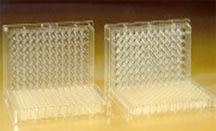Therapy for ALS
Overview
Therapy for ALS would ideally be a small molecule or a simple compound that a patient could swallow as a pill. This is only one possible route towards a treatment.
Modern biology offers many exciting if more complicated strategies than small molecules. Among these are gene therapies (see section on gene therapy ) and stem cell transplants (see section on stem cells ). A very new type of gene therapy approach is to silence genes by means of ribonucleic acid (RNA) that serves as the intermediary step between gene and protein.
Therapy for ALS would ideally be a small molecule or a simple compound that a patient could swallow as a pill. This is only one possible route towards a treatment.

Modern biology offers many exciting if more complicated strategies than small molecules. Among these are gene therapies (see section on gene therapy ) and stem cell transplants (see section on stem cells ). A very new type of gene therapy approach is to silence genes by means of ribonucleic acid (RNA) that serves as the intermediary step between gene and protein.
Promising Leads in ALS Therapy
Collaborative research teams are screening libraries of existing compounds to find candidates for clinical trials. Some leads have already been generated. Notably ceftriaxone, a compound first developed for its antibiotic action, is revealed to have a potential protective action for motor neurons affected by ALS. Tests of ceftriaxone in a mouse with a mutation linked with ALS confirmed its possible benefit through action on the nerve cell messenger called glutamate (see section on glutamate ), and ceftriaxone is now is slated for clinical testing in the summer of 2005.
Ideas about which aspects of the disease process to target for therapy in ALS are also changing. Researchers are determining that not only motor neurons, but also surrounding cells, the glia and even the muscle, may contribute to ALS and could serve as cell targets (see section on cell targets ) for therapeutic intervention.
Scientists are meanwhile seeking biomarkers (see section on biomarkers ) that will provide earlier diagnosis of ALS and will help in designing decisive clinical trials of new drugs. Biomarkers would be a chemical signature of the disease that clinicians could read in a sample of blood or other easily obtained body fluid. ALSA is funding a multi-center effort, enlisting biotech companies in the search for reliable biomarkers of ALS.

Wide avenues towards new therapies for ALS are opened by current research funded by ALSA. Possibilities under design include gene therapies, and stem cell therapies. Gene therapies take advantage of new carriers, the inactivated viruses know as vectors. Many gene therapy approaches to ALS emphasize delivery of the supportive molecules called trophic factors (see section on trophic factors ).
Other gene therapies with promising application to ALS include brand new techniques that target the RNA helpers that translate genes into proteins. RNA (see section on RNA ) based strategies for ALS include antisense molecules that trap and stop the RNA message for proteins, and a gene silencing approach called RNA inhibition (RNAi).
ALSA funded researchers are also working towards a better understanding of the exact cell targets of the disease process. Knowing which cells are instigating and playing important roles in the process of ALS will help in the design of new therapeutics that halt the degeneration of the nervous system in this relentless disease. Clinical trials (see section on clinical trials) funded through the TREAT ALS initiative are now a focus of bringing basic research findings rapidly to the clinic to find effective new therapeutics for ALS.
Recursos en español disponibles. Por favor llame al (212) 619-1400. Gracias.
42 Broadway, Suite 1724, New York, NY 10004 | (212) 619-1400
©2019 The ALS Association Greater New York Chapter. All rights reserved.
DONATE